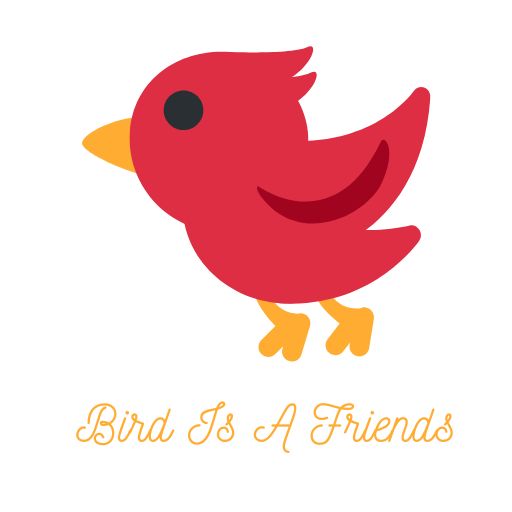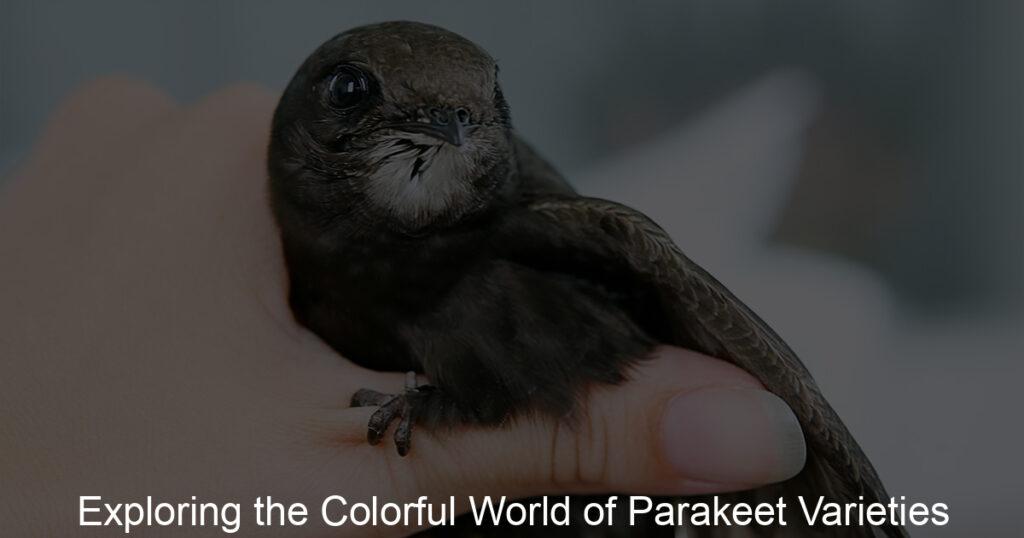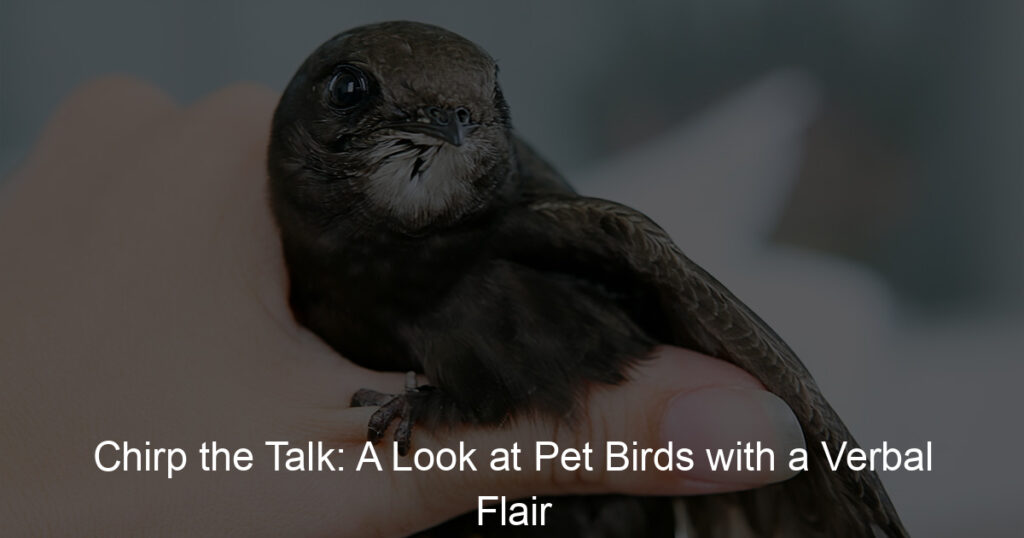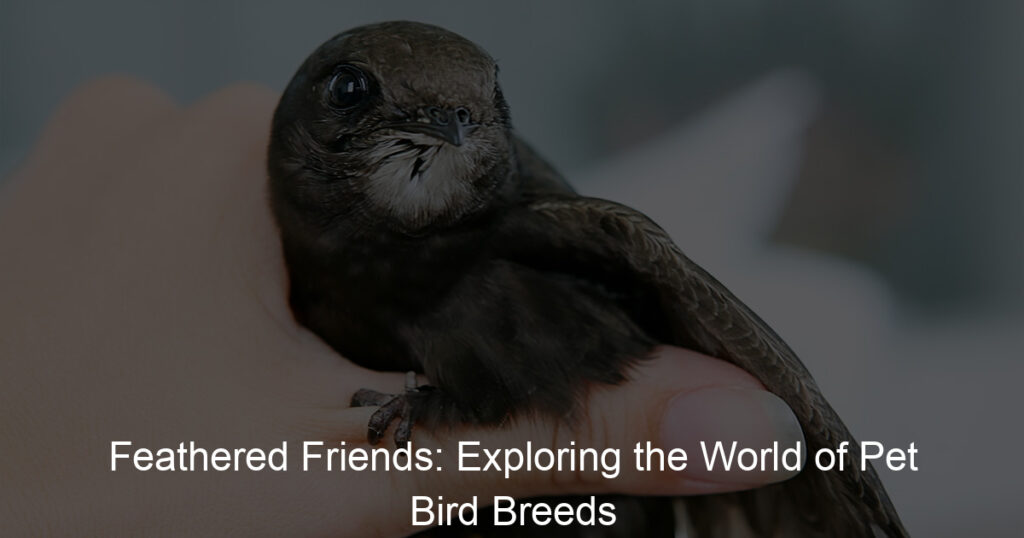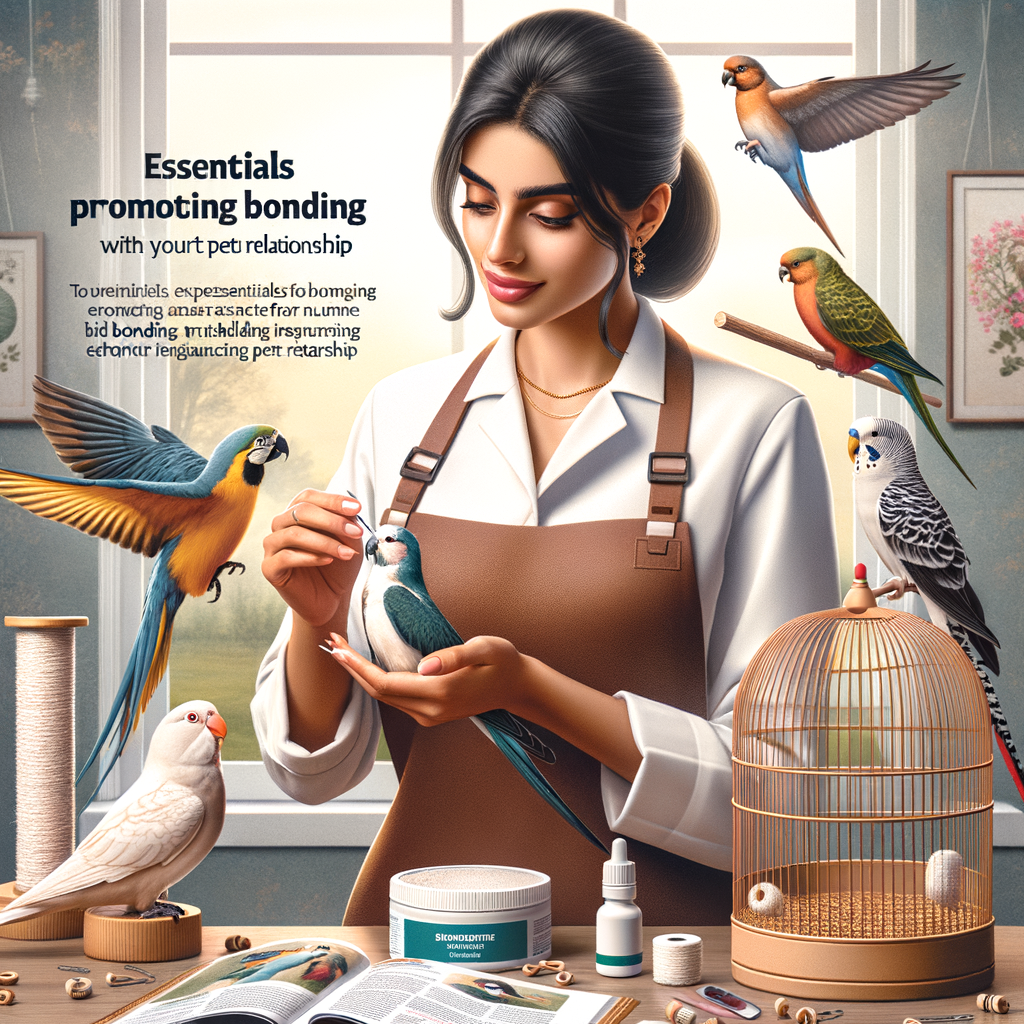
Introduction: The Importance of Bonding with Your Pet Bird
Building a strong bond with your pet bird is not just about companionship, it’s also about understanding their unique nature and the critical role of trust in their care. This bond can significantly enhance your bird’s quality of life and your enjoyment as a pet owner. Let’s explore these aspects in more detail.
- Understanding the unique nature of bird pets
- The role of trust in bird pet care
Birds are not like other pets. They are highly intelligent and have a distinct personality. They can be playful, affectionate, and even a bit mischievous. Birds are also very sensitive to their environment. Changes in their cage, diet, or daily routine can significantly affect their mood and behavior. Understanding these unique traits is the first step in building a meaningful bond with your bird.
Trust is the cornerstone of any relationship, and it’s no different with your pet bird. Birds are naturally cautious creatures. They need to feel safe and secure in their environment. This trust is built over time through consistent, positive interactions. By respecting your bird’s space, responding to their needs, and spending quality time with them, you can earn their trust and deepen your bond.
In the following sections, we will delve into the basics of building trust with your bird, advanced techniques for connecting with them, and inspiring stories of successful bird bonding. We will also share some practical tips and tricks to help you on your bird bonding journey.
Building Trust with Pet Birds: The Basics
Building trust with your pet bird is a rewarding journey. It requires patience, understanding, and a keen eye for bird behavior. Let’s delve into the basics of understanding bird behavior and how it can guide your bonding efforts.
Understanding Bird Behavior
Before we can build trust with our feathered friends, it’s crucial to understand their behavior. Birds, like humans, have their own unique ways of communicating. Recognizing these signs can significantly enhance your relationship with your pet bird.
- Recognizing signs of trust and mistrust in birds
- How bird behavior can guide your bonding efforts
Trust is a two-way street. Just as we show our trust in others, birds also exhibit signs of trust and mistrust. A bird that trusts you may show signs such as relaxed body language, willingness to step onto your finger, and a calm demeanor. On the other hand, signs of mistrust may include aggressive behavior, constant attempts to escape, and refusal to eat in your presence.
Understanding your bird’s behavior is like learning a new language. It can guide your efforts in building a strong bond. For example, if your bird shows signs of mistrust, it’s a signal that you need to slow down and give them more space. Conversely, if your bird is showing signs of trust, it means you’re on the right track and can continue with your current approach.
Remember, every bird is unique. What works for one bird may not work for another. The key is to be patient, observant, and responsive to your bird’s needs and behaviors.
Trust-Building Techniques for Birds
Building trust with your pet bird is essential for a healthy and happy relationship. Here are three key techniques to help you establish a strong bond with your feathered friend.
- Creating a Safe and Comfortable Environment
Your bird’s environment plays a crucial role in building trust. Birds need to feel safe and comfortable to open up and bond. Start by ensuring their cage is clean, spacious, and filled with toys and perches. Place the cage in a quiet, well-lit area where they can see and interact with the family. Remember, sudden changes can stress birds out, so introduce new items or changes gradually.
- Using Positive Reinforcement Techniques
Positive reinforcement is a powerful tool in building trust with your bird. This involves rewarding good behavior with treats, praises, or petting. For instance, if your bird steps up onto your finger without biting, reward them with their favorite treat. This helps them associate the action with positive outcomes, encouraging them to repeat the behavior.
- Respecting Your Bird’s Boundaries
Just like humans, birds have personal boundaries. Respecting these boundaries is key to building trust. Pay attention to their body language and vocalizations to understand their comfort levels. If they seem uncomfortable or scared, give them some space. Remember, forcing interaction can lead to fear and mistrust.
In conclusion, building trust with your bird takes time and patience. By creating a safe environment, using positive reinforcement, and respecting their boundaries, you can foster a strong bond with your pet bird.
| Technique | Description |
|---|---|
| Creating a Safe Environment | Ensure the bird’s cage is clean, spacious, and filled with toys. Place the cage in a quiet, well-lit area. |
| Positive Reinforcement | Reward good behavior with treats, praises, or petting to encourage repetition of the behavior. |
| Respecting Boundaries | Pay attention to the bird’s body language and vocalizations to understand their comfort levels. Give them space when needed. |
Connecting with Your Bird: Advanced Techniques
When it comes to bonding with your pet bird, understanding their unique language is crucial. It’s not just about feeding them or cleaning their cage, it’s about communicating with them on a deeper level. This section will guide you through advanced techniques to enhance your bond with your pet bird through effective communication.
Enhancing Bond with Pet Bird Through Communication
Communication is the key to any successful relationship, and it’s no different with your pet bird. By understanding their unique language, you can connect with them on a deeper level. Here are some advanced techniques:
- Learning your bird’s unique language: Each bird species has its own unique set of sounds and calls. Spend time observing your bird and try to understand what different sounds mean. For example, a certain chirp might mean they’re hungry, while another could indicate they’re scared or anxious. Over time, you’ll start to understand your bird’s unique language, which will help you respond to their needs more effectively.
- Using vocalization and body language to communicate: Birds communicate not just through sounds, but also through their body language. Pay attention to your bird’s posture, feather position, and eye movement. These can all provide clues about what your bird is feeling. For instance, if their feathers are fluffed up, it might mean they’re feeling relaxed and comfortable. On the other hand, a bird with its feathers slicked down might be feeling scared or threatened. By understanding these subtle cues, you can communicate with your bird more effectively and build a stronger bond.
Remember, building a deep connection with your pet bird takes time and patience. But with these advanced techniques, you’ll be well on your way to understanding your bird’s unique language and communicating with them more effectively.
Building a Deep Connection Through Play
Playing with your pet bird is not just a fun activity, but it also helps in building a deep and meaningful connection. This section will guide you on how to choose the right toys and games for your bird and how interactive play can be a powerful bonding tool.
- Choosing appropriate toys and games for your bird
Choosing the right toys and games for your bird is crucial. Toys not only keep your bird entertained but also stimulate their mind and help them stay active. Here are some tips to choose the right toys:
- Choose toys that are safe and non-toxic. Avoid toys with small parts that can be swallowed.
- Opt for toys that encourage physical activity like climbing, swinging, and foraging.
- Choose toys that stimulate their mind. Puzzle toys are a great choice.
Remember, every bird is unique. What works for one might not work for another. So, observe your bird’s behavior and preferences to choose the right toys and games.
- Interactive play as a bonding tool
Interactive play is a great way to bond with your bird. It not only helps in building trust but also makes your bird feel loved and cared for. Here are some ways to engage in interactive play:
- Teach your bird new tricks. This not only keeps them engaged but also stimulates their mind.
- Play fetch. Yes, birds can play fetch too! Start with small items and gradually move to larger ones.
- Play music and dance. Many birds enjoy music and love to dance. This can be a fun activity for both you and your bird.
Remember, the key to building a deep connection through play is patience and consistency. So, make sure to set aside some playtime every day.
In conclusion, play is not just about fun and games. It’s a powerful tool that can help you build a deep and meaningful connection with your bird. So, choose the right toys, engage in interactive play, and watch your bond with your bird grow stronger every day.
Case Studies: Successful Bird Bonding Stories
In this section, we will share two inspiring stories of bird owners who successfully bonded with their pet birds. These case studies highlight the importance of patience, understanding, and the right techniques in building a strong bond with your feathered friend.
-
Case Study 1: Building Trust with a Rescue Bird
Meet John and his rescue bird, Sunny. Sunny was a rescue bird who had a tough past. He was initially very wary of humans, including John. However, John didn’t give up. He started by respecting Sunny’s space and observing his behavior.
John learned that Sunny liked to play with a certain type of toy and loved a particular kind of seed. John started to use these as positive reinforcement. He would offer Sunny a seed every time he behaved positively. Gradually, Sunny started to trust John and even started to seek his company.
This case study shows that understanding and patience are key in building trust with a rescue bird. It might take time, but the bond that forms is truly rewarding.
-
Case Study 2: Connecting with a Shy Bird
Next, we have Sarah and her pet bird, Chirpy. Chirpy was a shy bird who would often hide in the corner of his cage. Sarah was determined to connect with Chirpy and make him feel comfortable.
She started by spending time near Chirpy’s cage, talking softly to him, and playing soothing music. Sarah also learned that Chirpy liked to be lightly stroked on his back. She would do this gently, making sure not to frighten him.
Over time, Chirpy started to open up. He would chirp happily when Sarah was around and even started to come out of his corner. This case study shows that even shy birds can form a strong bond with their owners if given the right care and attention.
These case studies demonstrate that with patience, understanding, and the right techniques, it is possible to form a strong bond with any bird, regardless of their past or personality. Remember, every bird is unique and requires a unique approach. The key is to observe, understand, and respect their needs and preferences.
Key Takeaways: Bird Bonding Tips and Tricks
As we conclude our journey through the world of bird bonding, let’s revisit some of the most important points we’ve discussed. These key takeaways will serve as your guide as you continue to foster a strong, trusting relationship with your feathered friend.
- Patience is key in building a bird pet relationship: Remember, building trust with your bird doesn’t happen overnight. It takes time and patience. Don’t rush the process. Allow your bird to adjust to you and your home at their own pace. This patience will pay off in the form of a deep, lasting bond.
- Consistency in care and interaction: Consistency is crucial in any pet relationship, and birds are no exception. Regular feeding, cleaning, and playtime schedules help your bird feel secure and loved. Consistency also helps establish routines, which birds find comforting.
- Understanding and respecting your bird’s individual personality: Each bird is unique, with its own likes, dislikes, and quirks. Take the time to get to know your bird’s personality. Respect their boundaries and preferences. This understanding and respect will help build trust and strengthen your bond.
- The joy and satisfaction of a strong pet bird trust and connection: There’s nothing quite like the feeling of earning your bird’s trust. The connection you share with your pet bird is special and rewarding. Cherish this bond and continue to nurture it.
- Continuing your journey in bird pet care: Bird care doesn’t stop with bonding. It’s a lifelong commitment that requires ongoing learning and adaptation. Continue to educate yourself about bird care and stay open to new techniques and ideas. Your bird will thank you for it.
Remember, the journey to a strong bird bond is as rewarding as the destination. Keep these key takeaways in mind as you continue your bird bonding journey. Happy bonding!
